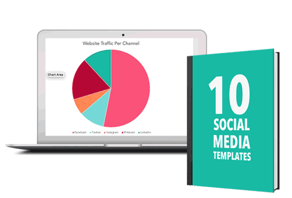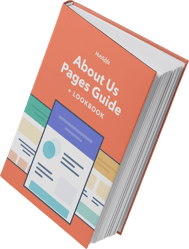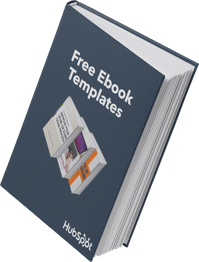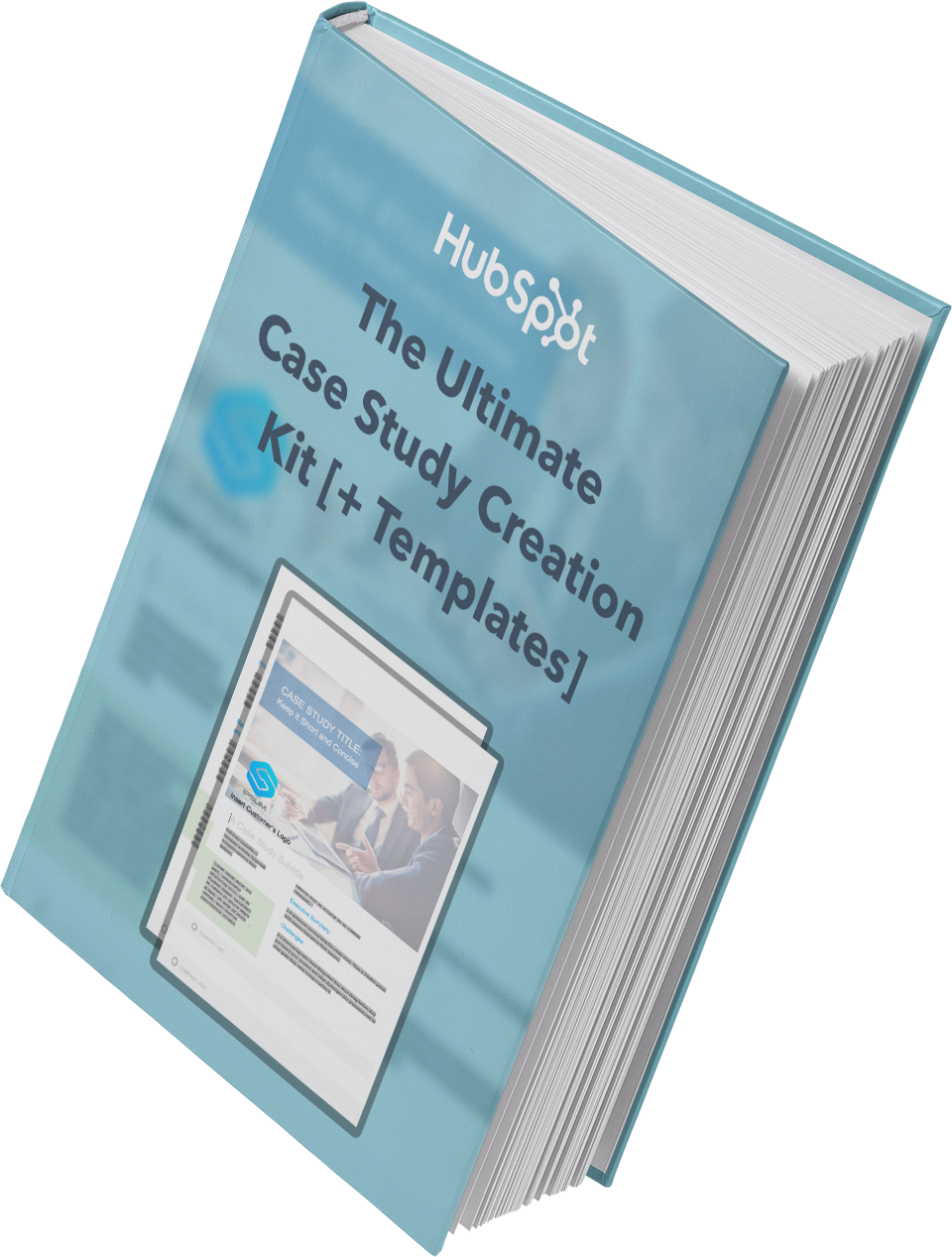Ask any marketer who's responsible for copywriting about their writing process, and you'll quickly find out that there's no specific process to follow.
Additionally, copywriting varies depending on your audience, purpose, and format — copywriting for an Instagram post, for instance, is entirely different than copywriting for a press release.
At HubSpot, we know the struggle. Copywriting demands creativity, inspiration, and hard work — and it can be difficult to find all three, day-in and day-out.
To help with writer's block, we've put together 10 copywriting templates you might use for any of your marketing efforts, including blogging, social media, email marketing, and even internal memos.
Let's dive in.
10 Copywriting Templates to Use in Marketing
1. Email Marketing
First, you'll need to determine what type of email you're writing to ensure you're speaking to the right audience. Coordinate with your team to see if this is a one-off marketing email like a monthly newsletter, or if you're being asked to write for a series of emails, like a nurture campaign.
As you're drafting your copy, consider how your email will encourage the reader to take a desired action, like clicking a link to purchase or scheduling a call with a sales rep to learn more about your services.
If you're not aiming for the reader to take a specific action and instead just want to send a general update, like a company announcement, you'll want the copy to easily and clearly communicate the core of your message to your reader.
Here's an example of a template you might use to welcome new subscribers to your newsletter:
Hi [First Name],
Thank you for signing up for [include what someone just signed up for like a blog subscription, newsletter subscription, company services, etc.]
At [Company Name] we're working to [list a few of your company's core goals, or include your mission statement]. We highly encourage you to check out [suggest a few recommendations so the reader can continue learning more about your company].
If you ever have any questions please feel free to contact us at [Contact information].
Thank you,
[Company Name, or individual sender's name]
Featured Resource: 15 Email Templates for Marketing and Sales
We've considered the types of emails marketers and salespeople are likely to send on a repeat basis, and crafted templates that can help eliminate that time.
2. Blogging
Blogs give copywriters a chance to dive deeper into topics in a way that isn't captured through emails, ads, or social media posts. There are so many different types of blogs you might write, so be sure to develop your blog strategy to keep a close pulse on what types of blog posts and clusters perform best for your business.
Since blogs tend to be longer than other types of copy, you want to make sure you're keeping your audience engaged. Consider what your reader is reading your post for and center your post on answering the topic-related questions readers are most likely to ask.
This blog post template is an example of a product or service review.
Title
Introduction
[Introduce the product/service that you're reviewing and relevant background information about the company the product/service is from. Clearly state what the reader will gain from reading the post.]
Subheading
[Write a brief using keywords. Use headings throughout the post to break up the key sections your post]
Body
[A few paragraphs will cover the bulk of the review here. If there are multiple features to the product/service section them separately as you review. Be detailed and answer as many questions you think your audience may have about the product or service]
- How much did it cost?
- How is the functionality?
- How was the customer service?
- Are you recommending the product/service?
- Who would benefit from using the product/service?
Conclusion
[Wrap up your post with final thoughts and a CTA if you want readers to check out the product/service.]
Featured Resource: 6 Free Blog Post Templates
We've put together six essential blog post templates every marketer needs — from how-to posts to listicles.
3. Social Media
Writing copy for social media depends on the social platform. If you're writing copy for Twitter, you have a strict character count, so the copy has to be brief but still appealing enough to get the attention of someone scrolling.
Similar to Twitter, Instagram is known for catchy captions. Character count isn't as much of a concern on Instagram. However, since the social media powerhouse is visually oriented, you'll want to write a caption that echoes the image or video in a post.
Overall, the primary goal when copywriting for social media is to thoroughly understand the different use cases of the social media platform for which you're writing. Here's an example of an outreach template you could use for another major social media platform, LinkedIn.
Hi [First Name], I just finished [reading/watching your post, reading/watching a post you shared, reading a comment you left on a post, etc.] I found it interesting that [include a few brief key points you found interesting, or anything that you feel showcases some common ground]. I also noticed that we share a few mutual connections like [list mutual connections].
Let's connect and keep sharing great content with each other!
Featured Resource: Social Media Templates
Download these templates
4. Website Copy
Copywriting for websites is about staying true to the business' overall brand, while making it easy for users to navigate the site. The copy that makes it to a site plays a huge role in setting the tone for a brand's voice. When writing website copy, then, it's critical you collaborate with key decision-makers for feedback to ensure your copy is on brand.
There's so many different components of a website, so start with clarifying what type of page you're writing for on the site. This may include, but is not limited to, the following:
- Home page
- About Us page
- Contact page
- Product or Service category page(s)
- FAQ page
- Blog page
Let's take a look at one of the most necessary pages to include on your site, the About Us page:
[Company name] was founded in [Year] by [Founder's name]. When [Founder's name] began building [Company name] [he/she/they was/were] determined to [help ,build, create] a company that offers [include the solution that the company problem solves for].
[Include as much or as little about the founders of your company. Sharing personable stories about how your company was founded is a great way to connect with readers and provide more insight into the people behind your brand.]
[Company name] helps people with [identified pain points of your buyer persona(s)]. To give our customers the best [product or service] we focus on [value proposition #1], [value proposition #2], and [value proposition #3].
[Company name] takes pride in working with people like you to provide quality [product/s or service/s] and exceptional customer service. We look forward to having you as a valued customer.
[Closing Signature]
Featured Resource: About Us Pages Guide + Lookbook
Get inspired by these awesome 'About Us' page examples and learn how to make yours great, too.
Download these templates
5. Ebooks
Ebooks are one of the most common types of content copywriters can create. Since ebooks are meant to contain extensive information, it's best to take the drafting process one section at a time.
Here's an example of a general ebook template.
Cover/Title Page
[In addition to including the title of your ebook, you'll also include your cover image. If this is a company resource also add your company's logo. If it's a resource coming directly from an individual contributor, include the author's name.]
Table of Contents
[The table of contents should clearly include a list of all the chapters or sections in the ebook, with the corresponding page numbers.]
Introduction
[Introduce the ebook topic with relevant background information and clearly state what the reader will gain from reading the ebook.]
Chapter/Section Pages
[This is the best part of your ebook because it's where the core of your information will be for your readers. Break the writing into digestible paragraphs for better readability, and include relevant images to help break up the copy and fill excessive white space.]
Conclusion Page
[This is the closing of your ebook. The goal of your conclusion should emphasize what the reader has gained, and any actionable steps they can use to put their new knowledge to good use.]
Optional pages to include:
About the Author page
[This page helps readers learn more about the author. The background information can vary depending on the author's level of comfortability, but overall the tone should be personable. This is also an opportunity to speak to the author's credibility of the ebook topic.]
Interactive pages
[Interactive pages can help keep your readers engaged. These pages may include: quizzes, worksheets, checklists etc. Including an interactive page in each chapter or section can help your reader feel they're actively learning as they read.]
Resources page
[You've most likely referenced tons of sources to help you get the final version of your ebook. Include the most important resources on this page for readers that may want to do further exploration on their own.]
Featured Resource: Ebook Templates
Let us take care of the design for you. We've created six free ebook design templates — available for PowerPoint, Google Slides, and InDesign — for a total of 18 templates.
Download these templates
6. Crisis Communications
If you've been tasked with writing for a crisis, you'll need to be especially attentive since this type of content is usually addressing serious or sensitive matters.
Developing clear messaging for crisis communications requires a special level of detail. You'll want to convey an empathetic tone that appropriately addresses the crisis. It's a good idea to collaborate with team members to ensure the overall message is properly aligned with your company's brand.
You may end up creating several pieces of content for a crisis including blog posts, social media posts, emails, an announcement from the CEO, a newsletter, etc. The following template is an overview of what to address:
An overview of the crisis
[Clearly identify the crisis and share detailed background information on what has occurred. If you're addressing something that includes individuals use discretion. Check with your company's legal team to ensure all documents are following proper protocol.]
Plan of action and timeline
[Create a plan that includes a timeline of how the events have developed and how your team will be addressing the issue/s at hand. Consider the types of questions media outlets could ask and write prepared statements the company, leadership, and general team members can use to respond.]
Contact information
[Share the best contact information people can use to learn more about what's happening and ask any additional questions. This could be your company's PR team or agency or an internal customer service or support team.]
Featured Resource: Crisis Management and Communication Kit
The templates in this crisis communication kit will help your crisis management team prepare for how to handle a crisis and respond to the media during the difficult time. Having clear lanes gives your team to operate effectively during times of crisis.
7. Customer Communications
Customer service is an essential part of any business. Writing to better understand and better communicate with your customers is necessary to foster stronger connections. One of the best ways to better understand your customers is by creating buyer personas. Buyer personas are semi-fictional representations of your ideal customers based on data and research.
Use this template outline to begin developing your buyer personas.
Background
[Create a background for your persona that best exemplifies the types of customers you have. This can include their job title, career path, and family life.]
Demographics
[Include age, gender, salary range, location, and anything else that best represents your customer persona.]
Identifiers
[Identifiers can include your personas general demeanor or communication preferences. This type of information is vital because it helps businesses build a more curated approach for their customers.]
Featured Resource: 17 Templates to Help You Put the Customer First
To help you foster better relationships with delighted customers, we put together this collection of templates — buyer persona templates, email templates, and survey templates — that put the customer first.
8. Case Studies
Potential customers often turn to case studies when they're researching a product or service they're interested in buying. Case studies provide evidence as to how a product or service has helped customers by identifying a pain point and providing a solution. They're a great resource for copywriters to show off their interview skills and boast strong statistics.
The key components of a case study are listed in the following template:
Executive Summary
[Provide a mini headline to grab your reader's attention. Then, underneath this headline, write 2–4 sentences (under 50 words) summarizing the whole story, making sure to include the most relevant points of the case study.]
About the Client
[Share a brief description of the company you're featuring in the case study. This should include the name of the company, when the company was founded, what the company does, and any other relevant information you think would be helpful for readers.]
The Challenges
[Write 2–3 short paragraphs describing the pain points your client was experiencing before they bought from you, the challenges this presented and/ the goals that were trying to be achieved.]
The Solution
[Write 2–3 short paragraphs describing how your company worked with your customer to find a solution to their challenges and implement a winning strategy. Use this space to describe how they are now using your product or service to solve their challenges from the previous section.]
Results
[Write a 2–3 paragraph conclusion to prove that your product/service impacted the customer's business and helped them to achieve their goals, especially if they've been able to quantify or speak to the ROI of their investment.]
Call-to-Action
[Use your CTA to lead your prospect to a landing page or a contact form. This will give you more information on who's reading your case study and who's interested in your company.]
Featured Resource: Case Study Template
Need help getting your first case study off the ground? Look no further. We've put together a comprehensive guide, complete with templates, designed to make the process a whole lot easier.
9. Call-to-Action
A call-to-action (CTA) is an image or line of text that's included in different types of content to encourage leads and/or customers to take action. In short, you want someone to click your CTA to carry out a desired action.
Add CTAs to blogs, emails, ebooks, and anywhere else you want a lead to complete a certain action to push them to the next stage of the buyer's journey.
Featured Resource: CTA Templates
These resources will empower you to create an impressive call-to-action strategy by helping you understand how CTAs work across different use cases, while also providing you with the means to create them for your own website.
10. Memos
A memorandum, or memo, is used to address internal communications within an organization. Think about the type of message you're aiming to communicate. If you're sharing minutes from a meeting, or detailing new policies and procedures, or communicating anything that people may need to refer back to in the future, a memo is likely a good idea.
Memos tend to be longer and more formal than emails (although you may attach a memo to an announcement email) and may be formatted according to your company's style guidelines.
Use this general memo template to get started.
Memo: [Memo Title]
Date: [Date of sending]
Memo To: [Individual(s), Department(s), or Organization(s) the memo is being sent to]
From: [Your Name, or the Name of the Department on whose behalf the memo is being sent]
Subject: [Enter a brief, 5-10 word subject line to describe the purpose's memo]
Introduction
Provide an executive summary of this memo in one-two paragraphs, highlighting the change that is happening, when it is effective, and what the key takeaways are for the memo recipient.
Background
Explain the background for this organizational change in one-two paragraphs. Some questions to answer in this section might be:
- Why was this idea pursued in the first place?
- What data, research, or background information informed this decision?
- What are the intended results of this organizational change?
Overview and Timeline
Describe the organizational change in clear, direct language. Specify the following:
- What will be changing.
- Who will be responsible for driving the change.
- When the changes will go into effect.
Closing
Close things out with a final note on:
- Why employees should feel excited and motivated about this change.
- Where and when employees should submit questions, comments, and/or concerns.
Featured Resource: 4 Free Memo Templates
We've drafted up four free memo templates for general, organizational, financial, and problem-solving updates. We've also included a best practices checklist for you to review before sending your memo out.
Adding these templates to your marketing arsenal can help you save time during your drafting process. Copywriters are shifting gears from blogs to case studies to emails all the time.
If you're responsible for writing amazing copy for different types of content on a regular basis, using templates is a great way to get your creative juices flowing.
from Marketing https://ift.tt/3rh6XhZ
via




No comments:
Post a Comment